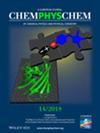1,4-二硼碱衍生物与CO2的反应。
IF 2.2
3区 化学
Q3 CHEMISTRY, PHYSICAL
引用次数: 0
摘要
用密度泛函理论计算方法研究了CO2与7个中心环为1,4-二硼氨酸的分子的反应。所选择的体系在1,4-二硼氨酸周围具有五元和六元的杂环,带有中性、阴离子和阴离子电荷。在所有情况下,反应都是放热和放能的。结合激活应变模型和能量分解分析方法,对计算得到的反应性趋势和区域选择性的来源进行了详细的定量分析,指出了静电和轨道相互作用在转化过程中的重要作用。本文章由计算机程序翻译,如有差异,请以英文原文为准。

Reactions of 1,4-Diborinine Derivatives with CO2
The reaction of CO2 with seven molecules featuring a 1,4-diborinine central ring is studied by means of density functional theory calculations. The selected systems present five- and six-membered aza rings surrounding the 1,4-diborinine with neutral, anion, and dianion charges. In all cases, the reaction is exothermic and exergonic. The computed reactivity trends and origin of regioselectivity are quantitatively analyzed in detail with the activation strain model in combination with the energy decomposition analysis method, which indicates the crucial role of electrostatic and orbital interactions in the transformations.
求助全文
通过发布文献求助,成功后即可免费获取论文全文。
去求助
来源期刊

Chemphyschem
化学-物理:原子、分子和化学物理
CiteScore
4.60
自引率
3.40%
发文量
425
审稿时长
1.1 months
期刊介绍:
ChemPhysChem is one of the leading chemistry/physics interdisciplinary journals (ISI Impact Factor 2018: 3.077) for physical chemistry and chemical physics. It is published on behalf of Chemistry Europe, an association of 16 European chemical societies.
ChemPhysChem is an international source for important primary and critical secondary information across the whole field of physical chemistry and chemical physics. It integrates this wide and flourishing field ranging from Solid State and Soft-Matter Research, Electro- and Photochemistry, Femtochemistry and Nanotechnology, Complex Systems, Single-Molecule Research, Clusters and Colloids, Catalysis and Surface Science, Biophysics and Physical Biochemistry, Atmospheric and Environmental Chemistry, and many more topics. ChemPhysChem is peer-reviewed.
 求助内容:
求助内容: 应助结果提醒方式:
应助结果提醒方式:


